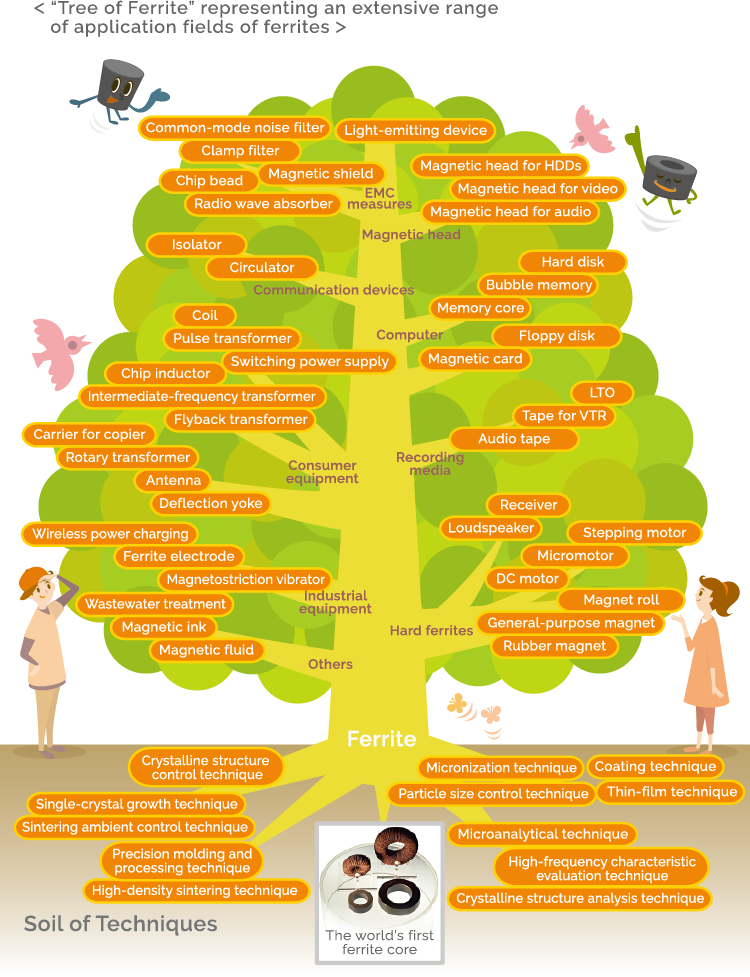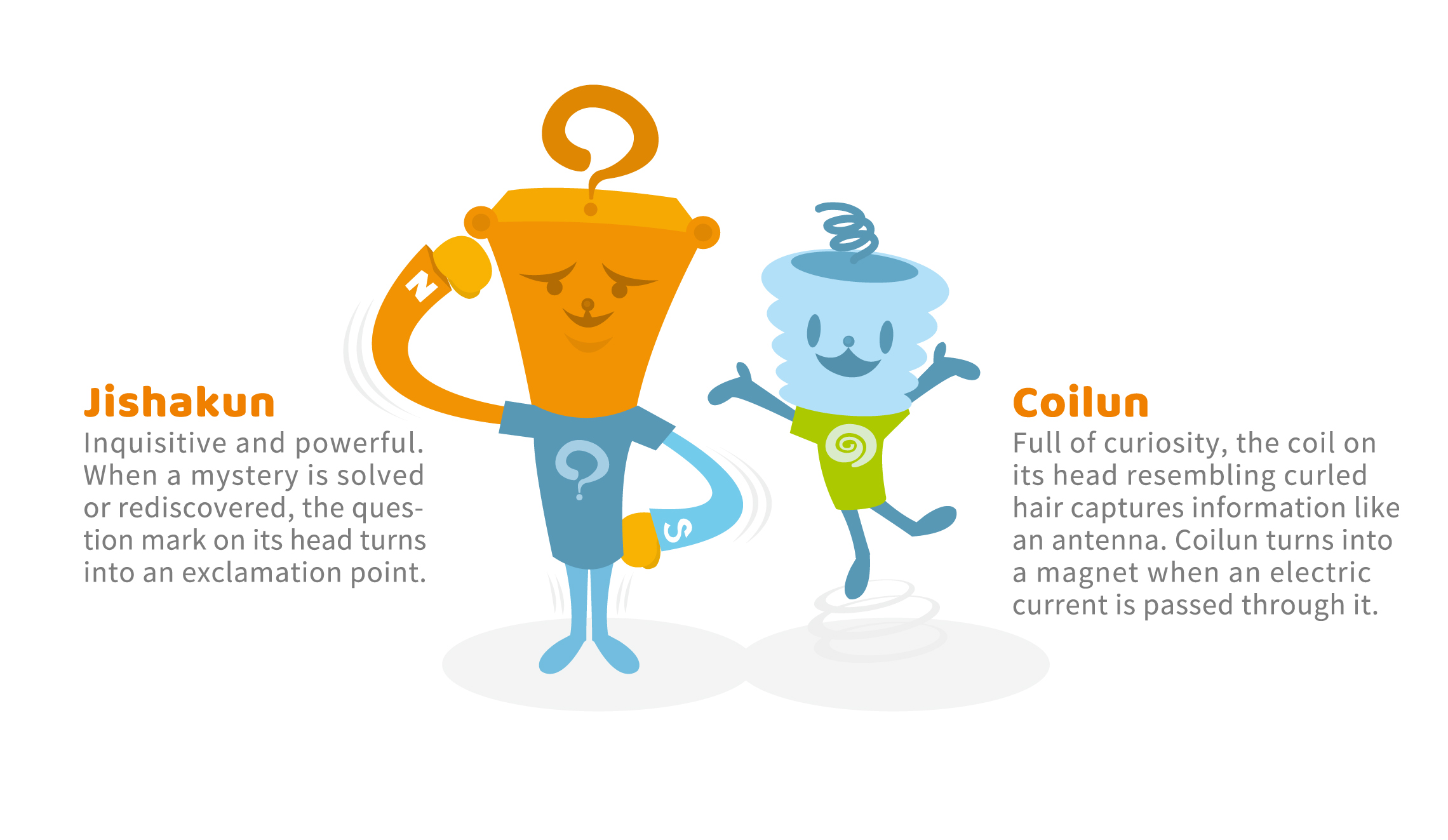Ferrite World
Vol. 12 Evolution of ferrite magnets by combination of materials, molding, and sintering technologies

Hard and soft ferrites born as twin brothers
Ferrite is Japan’s original magnetic material that was invented by Dr. Yogoro Kato and Dr. Takeshi Takei at Tokyo Institute of Technology in 1930.
Takei, who was researching ferrite produced as “hindrance” during a zinc refining process under Kato’s supervision, accidentally found that there was a strongly magnetic ferrite. He was measuring the magnetism of ferrite, by using his self-made magnetic balance equipment, while heating it in an electrical furnace. One day, he forgot to turn off the equipment and went back home, and the next day, he found that ferrite was strongly magnetized and that the magnetic balance was tilted significantly. This was because a magnetic field from an electromagnet of the equipment remained applied and thus the ferrite was strongly magnetized while slowly cooled (this was called magnetic field cooling effect).
This was the world’s first hard ferrite (ferrite magnet material), and during its research, he soon discovered another type of ferrite, or soft magnetic ferrite. This is the ferrite (soft ferrite) widely used in transformer cores. Thus, hard and soft ferrites were born successively like twin brothers at Takei’s laboratory.
The 1930s were the early days of high-frequency technology, during which there were yet no applications of ferrite, but hard ferrite drew attention as a bizarre, new magnet. At that time, it was a common knowledge that magnets were metallic, so it was a revolutionary discovery that a china-like sintered ceramic consisting primarily of metal oxides like iron rust became a magnet.
The ferrite magnet and ferrite invented by Takei are a composite oxide with a spinel crystal structure that is represented by the chemical formula MO·Fe2O3., where M expresses a divalent metal ion; specifically, if M is a Cu (copper) ion, the ferrite is called copper ferrite, or if M is a Zn (zinc) ion, the ferrite is called zinc ferrite. For example, magnetite (Fe3O4 = FeO·Fe2O3) is iron ferrite represented by taking M as a divalent iron ion. Lodestones, which have been known since before Christ, are a variation of magnetite and are, so to speak, natural ferrite magnets.
The new magnet invented by Takei was a solid solution of cobalt ferrite and magnetite, and was named OP magnet. The name is said to mean both “Ookayama’s permanent magnet” (Ookayama is a town where Tokyo Institute of Technology is located) and oxide powder as raw material.
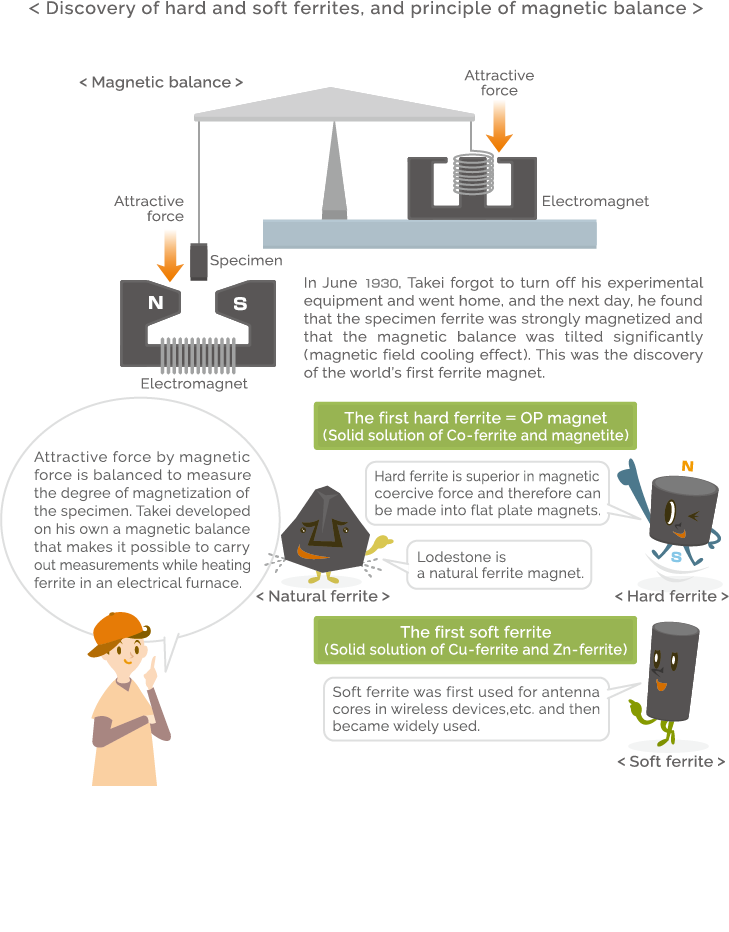
Ferrite magnets account for 90% or more of the world’s magnet production (in terms of weight)
The first ferrite magnets for practical use were mass-produced after the 1950s, when a new material with a magnetoplumbite crystal structure was developed by Philips in Holland. Ba-ferrite magnets that were represented by the chemical formula MO·6Fe2O3 where M was taken as Ba (barium) ion were first developed, and then Sr-ferrite magnets for which Ba was replaced with Sr (strontium) were put into practical use.
At that time, the most common magnets were alnico magnets, which were cast magnets. “Alnico” was named after the fact that it was an alloy made by adding aluminum, nickel, and cobalt to iron, the main component. They were used for loudspeakers, etc., but were expensive because cobalt, one of rare metals, accounted for about 10% or sometimes as much as 30% or more of their components. In the beginning of the 1960s, samarium-cobalt magnets were developed, which were the first rare-earth magnets. They were superior to alnico magnets in maximum energy products and were the strongest magnets, but they were more expensive than alnico magnets and were able to be used only for specific purposes as their raw materials contained samarium, a rare earth element, in addition to cobalt, a rare metal. Under such circumstances, in the 1970s a civil war occurred in Zaire (currently Democratic Republic of the Congo), a main producer of cobalt, and as a result the price of cobalt rose sharply. This was the cobalt crisis that stunned the magnet market.
It caused ferrite magnets, which were much cheaper than metal magnets, to be widely used mainly for loudspeakers, etc. Currently, while rare-earth magnets, including mainly neodymium magnets, have the largest share in monetary terms, ferrite magnets still have a 90% or greater share of the world’s magnet production in terms of weight. This trend is predicted to continue in the future. The reason for this is that since ferrite magnets consist primarily of iron oxide, they cause little concern about supply of raw materials and they are chemically stable and environmentally friendly.
The biggest application of magnets is motors. Ferrite magnets are used in motors for household electronics and industrial equipment. Also, several tens to hundreds or more of small DC motors using ferrite magnets are used for power windows, power mirrors, etc. in modern vehicles. Improvements in the performance of ferrite magnets allow reduction in the size and weight of motors, leading to massive energy-saving effects throughout society.
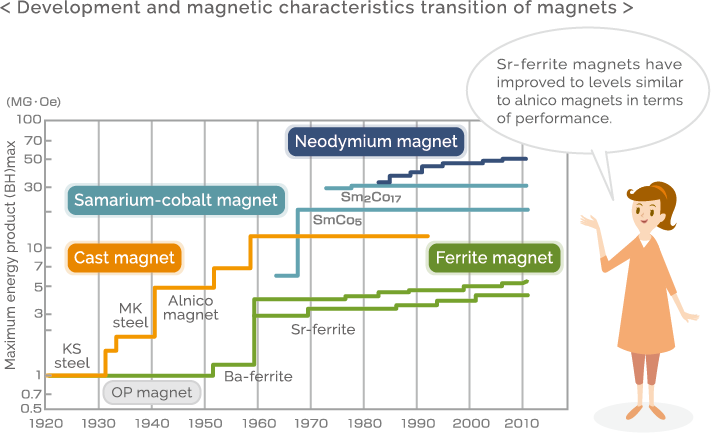
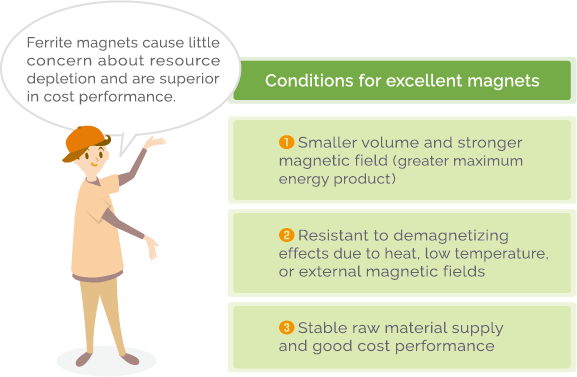
TDK’s NS1 method that has achieved a reduced thickness of 2mm or less
Magnetoplumbite ferrite has a hexagonal crystal structure and its direction of easy magnetization is the C-axis direction (direction vertical to the bottom plane). Stronger ferrite magnets can be manufactured by applying external magnetic fields during the molding process to align the direction of easy magnetization. A method in which material is shaped in a powdery state with a magnetic field applied is called a dry method, and a method in which ferrite powder is made into slurry by mixing it with water and then is dried and formed with a magnetic field applied is called a wet method. Ferrite powder moves more easily in water, so it is well aligned in the direction of an external magnetic field by making it into slurry.
Anisotropic Sr-ferrite magnets made by the wet method are superior to magnet steels, such as KS steel and MK steel, and have reached levels of alnico magnets, in terms of properties. Also, various material compositions were explored around the world due to the addition of trace elements, etc., and in the 1990s, it was said that improvement of properties of ferrite magnets had already reached its limit. Under such circumstances, in 1997, TDK developed FB9 material, a new material with much better properties than those of conventional materials, by using a technology of including La (lantern) and Co (cobalt) into Sr-ferrite.
In 2007, FB12 material was launched, which was developed by optimizing the material composition and microstructure of this FB9 material to further improve magnetic properties. It has 20% larger maximum energy product than the FB9 material, and significantly contributes to reducing the size and weight of motors. Also, it eliminates the problem of low-temperature demagnetization, which is specific to ferrite magnets, and maintains stable power in the wide temperature range from -40 to +120°C, so it is suitable for in-car small motors, etc. used in severe temperature conditions.
Since ferrite magnets are ceramics manufactured by molding and sintering powder material, it has been difficult to reduce their thickness to less than 3mm; however, there has always been a demand for reduction in the size and weight of motors. Thus, TDK has developed a new technology named the “NS1 method.” High-performance thin anisotropic ferrite magnets with a small thickness of 1 to 2mm (FB13B and FB14H materials) have been created on the basis of FB12 material, using a unique high-density filling method. They are the world’s top-level ferrite magnets developed by combining advanced materials, molding, and sintering technologies.

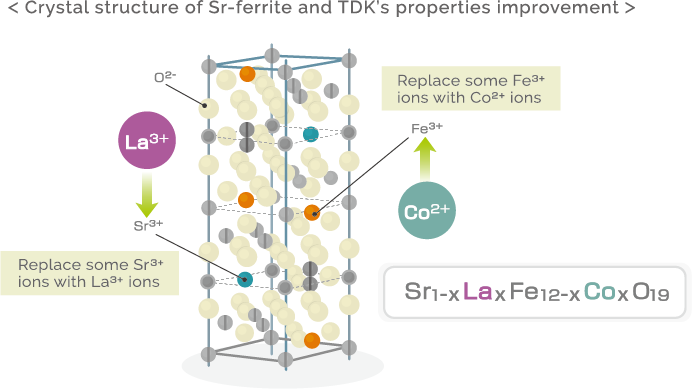
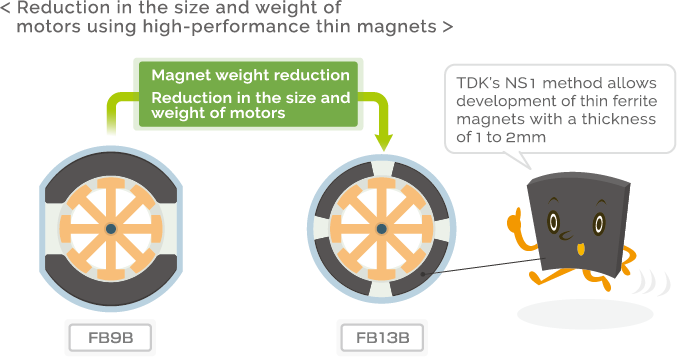
TDK is a comprehensive electronic components manufacturer leading the world in magnetic technology



